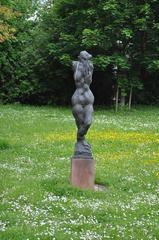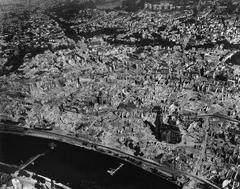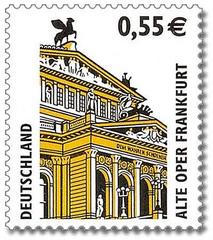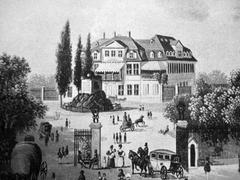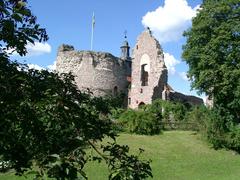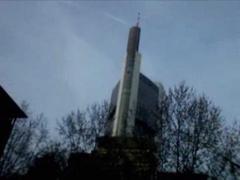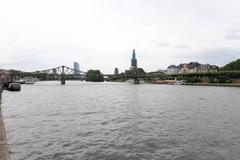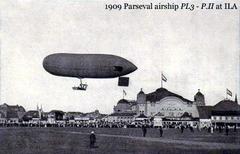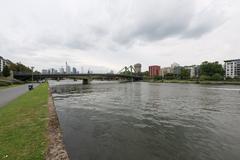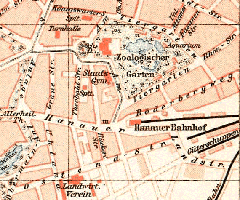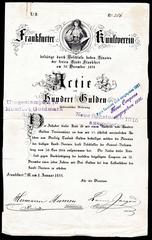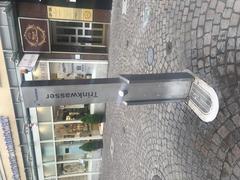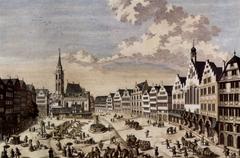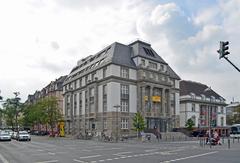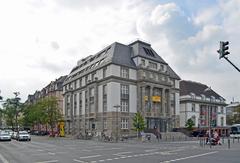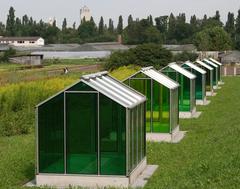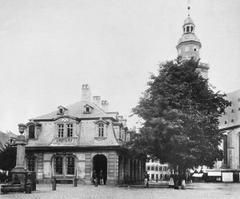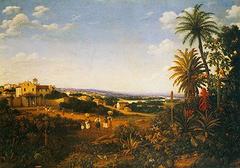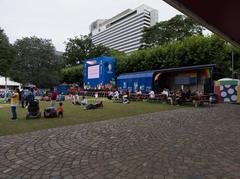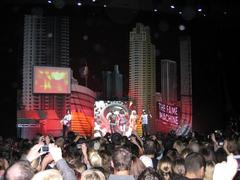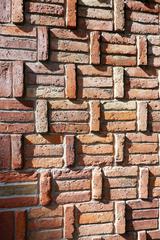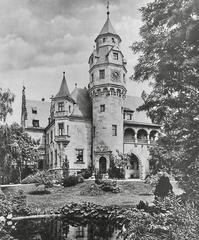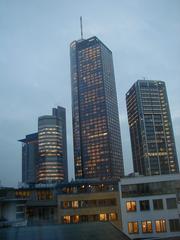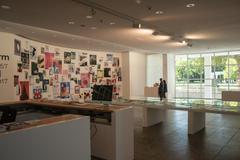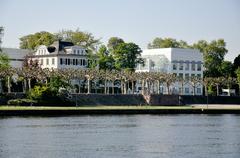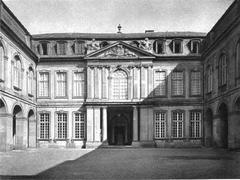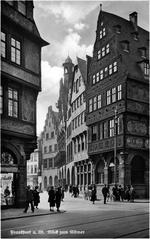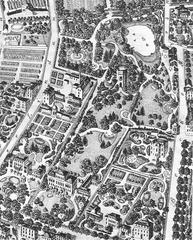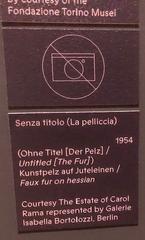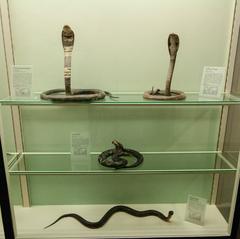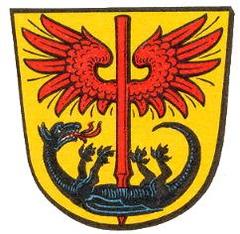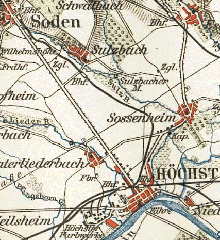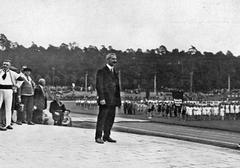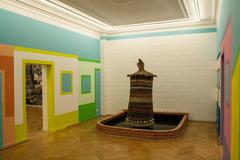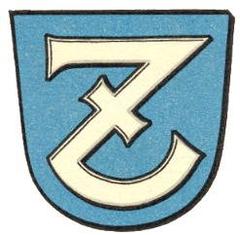Comprehensive Guide to Visiting Deutschherrnbrücke, Frankfurt am Main, Germany
Date: 25/07/2024
Introduction
The Deutschherrnbrücke, located in Frankfurt am Main, Germany, is a steel arch bridge that stands as a symbol of the city’s rich historical and cultural heritage. This iconic bridge, constructed between 1911 and 1913, serves not only as a vital transportation link but also as a significant historical monument. Spanning the River Main, it connects the Frankfurt Ostend and Sachsenhausen districts and has played a crucial role in the city’s railway network since its inception (Wikipedia).
Over the years, the Deutschherrnbrücke has witnessed significant events, including its strategic destruction during World War II and subsequent reconstruction in the post-war period. Today, it continues to be an essential part of the city’s infrastructure while also gaining cultural significance through modern installations like the Klangkunst-Installation Sonic Vista by artists Sam Auinger and Bruce Odland (Wikipedia).
For visitors, the Deutschherrnbrücke offers stunning views of Frankfurt’s skyline, particularly at dawn, sunset, and night. It is a popular spot for photography, walking, and cycling, as it is part of the Frankfurt Green Belt Circular Trail. The bridge is accessible 24/7 and free of charge, making it an ideal location for both spontaneous visits and planned explorations. This comprehensive guide aims to provide you with all the necessary information, from its historical background to practical visitor tips, ensuring a memorable visit to this remarkable landmark.
Table of Contents
- Introduction
- History of Deutschherrnbrücke
- Modern Developments and Cultural Significance
- Visitor Information
- Special Events and Guided Tours
- Photographic Spots
- Preservation and Future Plans
- FAQ
- Conclusion
History of Deutschherrnbrücke
Construction and Early Years
The Deutschherrnbrücke was constructed between 1911 and 1913 by the MAN Werk Gustavsburg to facilitate a two-track railway line and includes a pedestrian walkway. Spanning the Main River at river kilometer 36.900, it connects the Frankfurt Ostend and Sachsenhausen districts (Wikipedia). The bridge’s design features three main arches - the two outer arches each span 74.60 meters, while the central arch spans 124.80 meters. The northern pier is situated directly on the riverbank, whereas the southern pier is a river pier.
Upon its completion and opening on April 1, 1913, the Deutschherrnbrücke became an integral part of the railway network, linking the newly established Frankfurt Ostbahnhof with the Südbahnhof. This connection was crucial for the transportation of goods and passengers, enhancing the efficiency of the city’s railway system (Structurae).
World War II and Reconstruction
The Deutschherrnbrücke’s strategic importance made it a target during World War II. On March 26, 1945, as Allied forces advanced towards Frankfurt, a Wehrmacht demolition squad destroyed the southern arch of the bridge to hinder the progress of the US Army (Wikipedia). Despite this effort, Frankfurt was captured with minimal resistance the following day.
In the immediate aftermath of the war, a temporary bridge was constructed to restore the vital railway link. By the end of 1945, a provisional structure was in place, allowing limited traffic to resume. The permanent reconstruction of the Deutschherrnbrücke began in July 1947 and was completed on June 3, 1949. The reconstruction costs amounted to 469,000 Reichsmarks and 821,000 Deutsche Marks (Structurae).
Post-War Significance
Following its reconstruction, the Deutschherrnbrücke regained its status as a critical infrastructure component for Frankfurt’s railway network. The bridge facilitated the movement of goods and passengers, contributing to the city’s economic recovery and growth in the post-war period. The Frankfurt Harbour Railway, which operated along the bridge, played a significant role in supporting the newly developed harbor facilities, industrial estates, and the wholesale market (Wikipedia).
Modern Developments and Cultural Significance
In recent years, the Deutschherrnbrücke has continued to serve as a vital transportation link while also gaining cultural significance. Since 2011, the bridge has hosted the Klangkunst-Installation Sonic Vista by artists Sam Auinger and Bruce Odland. This installation features red and blue spheres suspended between the western struts of the central arch, containing speakers that emit ambient sounds and bridge vibrations, altered through resonance tubes and microphones hidden beneath the bridge (Wikipedia).
The bridge is also part of the Frankfurt Green Belt, a network of green spaces and recreational areas encircling the city. The Green Belt Circular Trail crosses the Deutschherrnbrücke, making it a popular spot for walkers and cyclists. The bridge offers some of the best views of Frankfurt’s skyline, particularly at dawn, sunset, and night, making it a favorite location for both locals and tourists (Spotted by Locals).
Visitor Information
Visiting Hours and Tickets
The Deutschherrnbrücke is accessible 24 hours a day and is free of charge. There are no tickets required to visit the bridge, making it an ideal spot for spontaneous exploration.
How to Get There
The bridge can be reached from various points along the Main River. Popular routes include walking from the Mainkai after visiting landmarks like Paulskirche or Römer, or from the Schaumainkai with its array of museums. Public transportation options and parking facilities are also available nearby.
Nearby Attractions and Activities
Visitors can combine a trip to the bridge with a stroll or run along the river. Nearby attractions include the Hafenpark and the Oosten restaurant, where you can relax and enjoy the view. The bridge is also a part of the Frankfurt Green Belt Circular Trail, making it a great starting point for a longer hike or bike ride.
Special Events and Guided Tours
The Deutschherrnbrücke occasionally hosts special events and art installations, adding to its cultural appeal. While there are no regular guided tours specifically for the bridge, many city tours include it as a point of interest. Check local tour operators for more information.
Photographic Spots
The bridge offers stunning views of Frankfurt’s skyline, making it a popular spot for photography. Ideal times for capturing the best shots are during dawn, sunset, and nighttime when the city lights create a picturesque backdrop.
Preservation and Future Plans
Despite its historical and cultural significance, the Deutschherrnbrücke has faced challenges related to its structural condition. Due to its deteriorating state, Deutsche Bahn has proposed constructing a new bridge adjacent to the existing one to accommodate railway traffic. The current bridge, recognized as a historical monument, will be preserved, although its future use remains undecided (Wikipedia).
FAQ
What are the visiting hours for Deutschherrnbrücke?
The Deutschherrnbrücke is accessible 24 hours a day.
Do I need tickets to visit the Deutschherrnbrücke?
No, visiting the Deutschherrnbrücke is free of charge.
How do I get to the Deutschherrnbrücke?
The bridge can be reached from various points along the Main River, such as the Mainkai or Schaumainkai. Public transportation options and parking facilities are also available nearby.
What are some nearby attractions?
Nearby attractions include the Hafenpark and the Oosten restaurant. The bridge is also part of the Frankfurt Green Belt Circular Trail.
Conclusion
In summary, the Deutschherrnbrücke is more than just a bridge; it is a testament to Frankfurt’s resilience, historical significance, and cultural evolution. From its construction in the early 20th century to its role in the city’s railway network and its post-war reconstruction, the bridge has been a silent witness to many pivotal moments in history. Today, it continues to serve as a vital transportation link and a cultural landmark, attracting locals and tourists alike with its stunning views and unique installations like the Sonic Vista (Spotted by Locals).
Visitors can enjoy a range of activities, from walking and cycling along the Frankfurt Green Belt Circular Trail to exploring nearby attractions such as the Sachsenhausen district, Hafenpark, and the European Central Bank. The bridge’s accessibility and lack of admission fees make it an ideal destination for spontaneous visits and planned outings alike. Whether you are a history buff, a photography enthusiast, or simply looking for a scenic spot to relax, the Deutschherrnbrücke offers something for everyone (Structurae).
Plan your visit today to experience the rich history and breathtaking views that the Deutschherrnbrücke has to offer. For more travel tips and updates, don’t forget to download our mobile app Audiala and follow us on social media.
References
- Wikipedia, n.d., Deutschherrnbrücke source Wikipedia
- Structurae, n.d., Deutschherrnbrücke source Structurae
- Spotted by Locals, n.d., Deutschherrnbrücke source Spotted by Locals
- The Wondering Englishman, n.d., Exploring Frankfurt: A Comprehensive Guide to a Day Packed with Adventure source The Wondering Englishman
- Phototravellers, n.d., Frankfurt Sights source Phototravellers
- Kate Abroad, n.d., 2 Days in Frankfurt Itinerary source Kate Abroad
- The Crazy Tourist, n.d., 25 Best Things to Do in Frankfurt, Germany source The Crazy Tourist
- Visit Frankfurt, n.d., Frankfurt Tips source Visit Frankfurt
